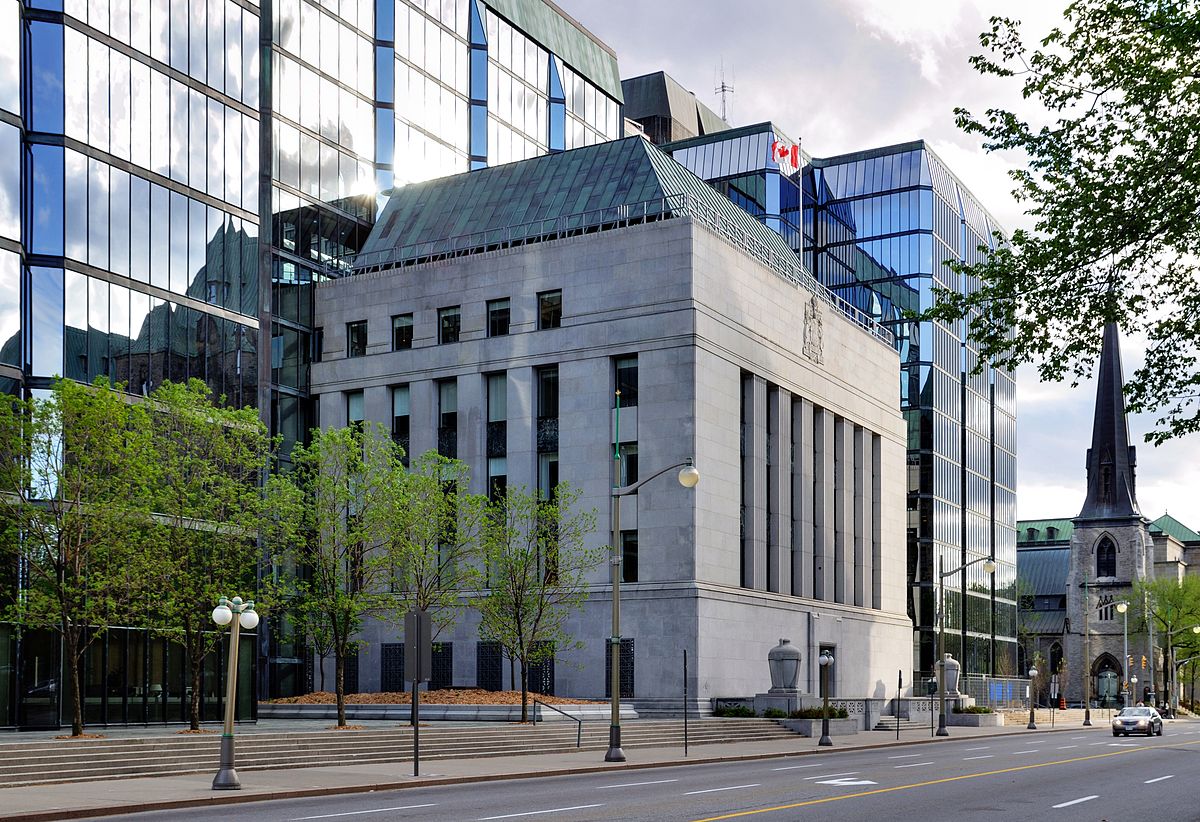Canada News
Statistics Canada says pace of Canadian economic growth slowed in third quarter

The Bank of Canada raised its key interest rate target in October to 1.75 per cent, its highest level in about a decade. (File Photo By Taxiarchos228, CC BY-SA 3.0)
OTTAWA — The pace of economic growth in Canada slowed in the third quarter as business investment spending fell and the growth in household spending slowed, raising questions about the future pace of interest rate hikes by the Bank of Canada.
The Canadian economy grew at an annualized pace of two per cent in the third quarter compared with 2.9 per cent in the second quarter, matching the expectations of economists, according to Thomson Reuters Eikon.
However, economists said the details in the latest reading of the economy showed troubling signs of weakness, adding that a separate report showed the economy ended the quarter on a weak note.
The Bank of Canada raised its key interest rate target in October to 1.75 per cent, its highest level in about a decade. Investor expectations are that the central bank will keep its key rate on hold when it makes its next scheduled rate announcement next week, but expectations had been that it would likely raise it in January.
Paul Ferley, assistant chief economist at Royal Bank, pointed to the decline in business investment and a larger-than-expected drop in residential investment as disappointing.
And Ferley said it looks like economic growth in the fourth quarter will be even slower.
“It is looking like right now that Q4 growth could closer to one per cent than two,” he said.
Ferley said he continues to expect an interest rate increase in the first quarter, but that it will be contingent on how the economy fares and if the slowing in the last three months of 2018 proves to be transitory.
The third quarter ended on a weak note as real gross domestic product edged down 0.1 per cent in September. Statistics Canada noted it was the first move lower after seven consecutive months of growth.
The agency attributed September’s decrease to lower output across all goods-producing industries which slipped 0.7 per cent. Services industries edged up 0.
2 per cent.
Stephen Brown, senior Canada economist at Capital Economics, said the fourth quarter will get a bit of a boost from the resumption of the Syncrude facility and the inclusion of legalized marijuana in the statistics for the first time.
“But the bigger factor is that the economy faces big headwinds from lower oil prices and weak new home sales,” Brown wrote in a report.
“Both suggest that investment could fall further in the quarters ahead. That will give the Bank of Canada pause for thought and means that a January rate rise is looking less likely than it did a month ago.”
In the third quarter, spending on non-residential investment in buildings and engineering structures fell 1.3 per cent, as investment in the oil and gas sector slowed. Machinery and equipment investment by businesses fell 2.5 per cent.
Meanwhile, the growth in household spending slowed to 0.3 per cent in the quarter, compared with 0.6 per cent in the second quarter. The drop came as spending on durable goods fell 0.7 per cent, with spending on vehicle purchases falling 1.6 per cent.
Total residential investment also fell 1.5 per cent as spending on new home construction dropped 4.7 per cent, the largest decrease since the second quarter of 2009. Renovation spending fell two per cent, while ownership transfer costs rose 7.
1 per cent.





















